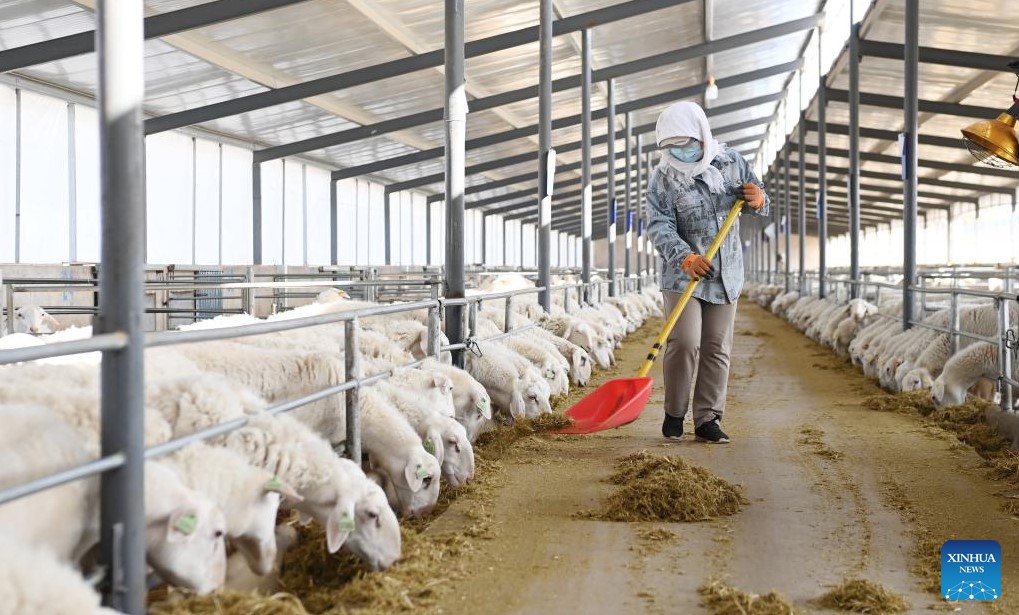
Understanding China’s agricultural landscape isn’t just a strategic curiosity for New Zealand’s farmers and exporters, it’s a necessity. With over half the world’s pigs, the largest aquaculture sector, and a booming demand for quality animal protein, China is not just a market, it’s a driver of global agriculture. And for a country like ours, where exports underpin the rural economy, keeping an eye on how Chinese consumers think, eat and spend has never been more important.
Ian Lahiffe, who’s spent years embedded in the Chinese agri-food sector, puts it plainly: “China has 20 percent of the global population, but only nine percent of the arable land. Maintaining massive livestock industries on such limited land creates a challenge.” That challenge is reshaping global supply chains. From dairy to beef, soy to corn, what happens in Chinese agriculture impacts many across the world.
For New Zealand, which has long leaned into our clean, green image and high standards of traceability, the opportunities and risks are significant. China remains our largest trading partner for dairy, meat and more. But understanding where its agri-sector is headed, especially in terms of consumer preferences and local production strategies can help us stay one step ahead.
Consumer expectations in China are shifting. “It’s not just about more protein,” Ian explains, “but better protein.” Where pork once dominated, now poultry has overtaken it in volume, and beef consumption is climbing rapidly. “There’s a growing focus on quality,” he says, “and Chinese consumers are among the luckiest in the world, with access to top producers from Ireland to Argentina.” That’s good news for New Zealand, where premium grass-fed beef and high-quality dairy products can differentiate in a crowded market.
Yet, it’s not all smooth sailing. Oversupply in some sectors has made China a deflationary market. Egg prices, for example, are down 10 percent year-on-year. In contrast to the inflationary trends seen elsewhere, China’s scale and efficiency mean its domestic supply can quickly saturate markets, something exporters need to watch closely.
Scale, as it turns out is everything. “You’ve got producers who started with 22 pigs in the 1970s and are now finishing 70 million pigs a year,” Ian notes. One such operation receives strong government support and operates under a vertically integrated model. “He seems almost too big to fail,” Ian says, hinting at the soft safety net afforded to these national champions. This level of consolidation, backed by government interest and investment, leaves little room for smaller or foreign players to thrive.
Indeed, some international ventures have struggled. Ian points to Fonterra’s difficulties managing large-scale dairy operations in China as one example. “They may have been held to different standards,” he says. Meanwhile, Thai company CP Group has succeeded, showing that foreign success in China is possible but not guaranteed.
At the same time, domestic players are innovating at pace. Cold chain logistics, a massive bottleneck just a decade ago has transformed. “You can order chilled products via an app and have them at your door in 30 minutes,” Ian says. This improvement has unlocked new consumer behaviours, making it easier to distribute branded, processed meat further from population centres.
And while cold storage enables growth, it’s not a universal solution. “There’s still a strong perception that fresh meat tastes better than frozen or processed products,” Ian explains. It’s a reminder that while infrastructure matters, consumer sentiment remains a powerful force.
Perhaps most relevant to Kiwi exporters is the shift in China’s feed strategy. Ian outlines a two-pronged trend: closer ties with Brazil, particularly for soy and beef, and a deliberate move towards lower protein animal diets that require less imported soy. “They’ve developed tech where they can reduce protein in feed and supplement with peptides or enzymes,” he explains. “Imports could drop from 100 million to 90 million tonnes of soy this year.” This move should trigger some reflection. What happens when your biggest customer gets better at self-sufficiency?
Even the structure of China’s beef sector is evolving. From what Ian calls a “square” model, with many smallholders and few large processors it’s slowly becoming more integrated. But challenges remain. “There’s no national genetics database,” Ian says, contrasting it with Ireland, where every cow is DNA tested. “There’s a lot of crossbreeding and inbreeding causing productivity issues.” For New Zealand’s beef industry, which prides itself on traceability and breeding quality, this gap presents a chance to add value through genetics and know-how, rather than just product.
Transportation and animal welfare also remain major friction points. “I visited a producer losing six percent of bodyweight on cattle during transport to slaughter, three days on the road in poor conditions,” Ian says. “It’s pretty grim.” It’s a stark contrast to New Zealand’s standards, and potentially another space where values-based branding could set our products apart.
But despite all the complexity, one thing is clear: the Chinese government is serious about beef. A new agriculture minister, known for rolling out beef incentives in past roles, could signal more investment and focus in that sector. For exporters, that’s both an opportunity and a warning, China may start producing more of what it used to import.
Still, as Ian points out, there’s no single market that can replace China. “The boat is sailing on being overly reliant,” he says, “but there isn’t another market with that scale waiting to be tapped.” That means diversification is essential, but so too is understanding the trends within China itself.
Have a listen to the podcast to hear the full story.
Angus Kebbell is the Producer at Tailwind Media. You can contact him here.

We welcome your comments below. If you are not already registered, please register to comment.
Remember we welcome robust, respectful and insightful debate. We don't welcome abusive or defamatory comments and will de-register those repeatedly making such comments. Our current comment policy is here.